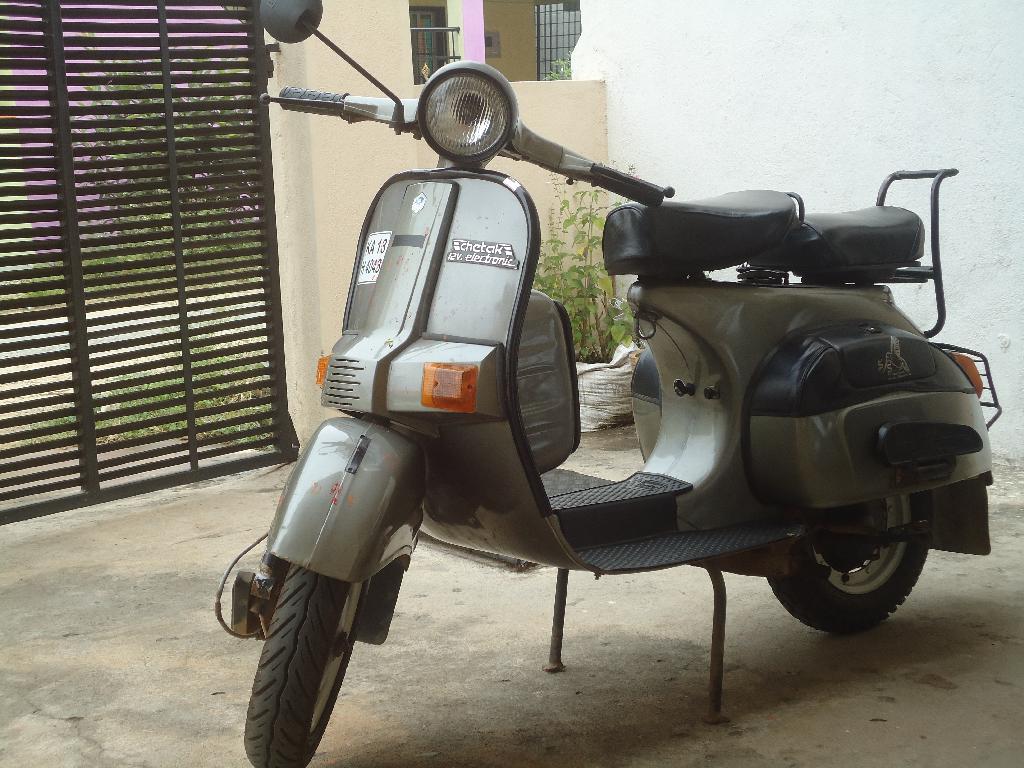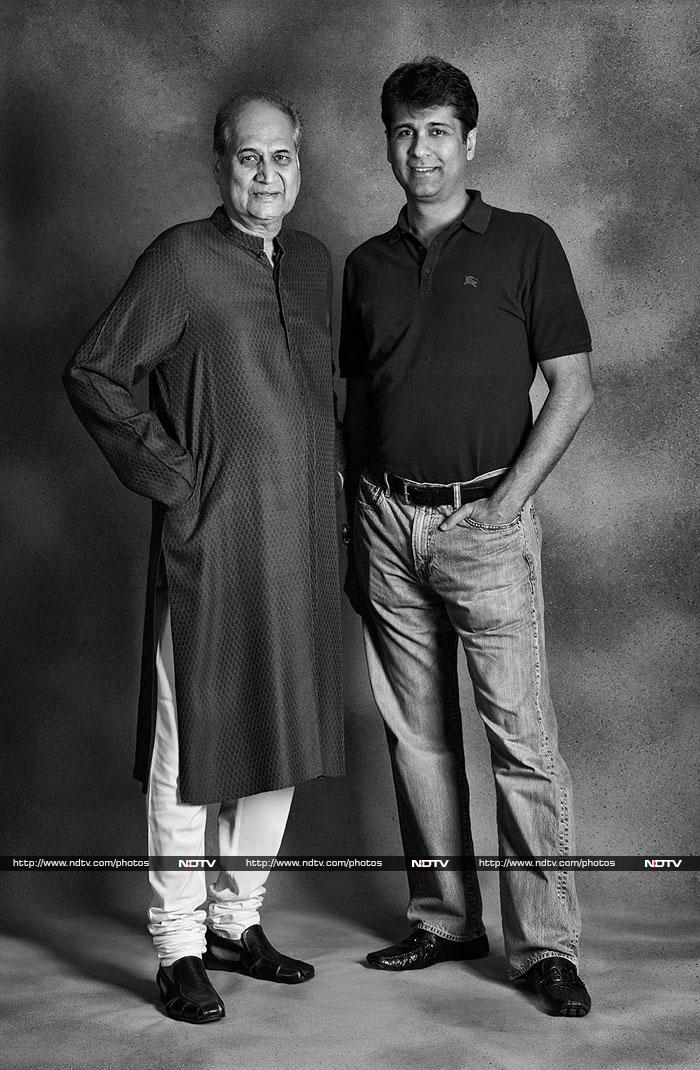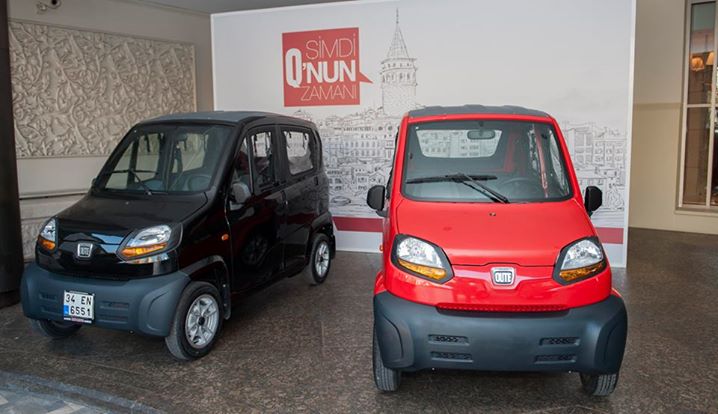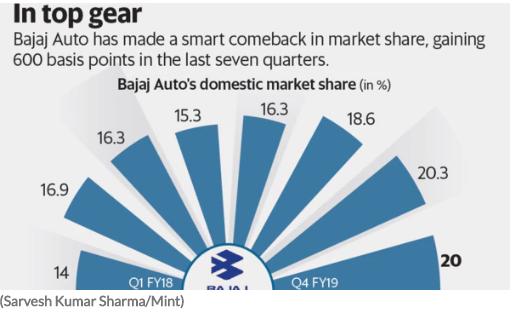The largest three-wheeler manufacturer of the world, Bajaj Auto, a Pune based firm started its operations in the 1960s. The MD of Bajaj Auto, Rajiv Bajaj helped the company to regain its dominating position in the three-wheeler and two-wheeler market segment with the launch of Pulsar and its variants. The mobike sector has overshadowed the scooter segment of Bajaj, giving it quite a tumultuous time during the latter half of the 1990s and the beginning of the 21st century. In the 1970s, Bajaj launched the first indigenous scooter brand Chetak. The move was highly successful and the name Bajaj became synonymous to Bajaj, just like Colgate was synonymous to toothpaste. In the 1980s, there were no other scooter manufacturers, and Bajaj Auto had a monopoly on the segment. The consumers trusted and loved this brand, promoted with a jingle of “Humara Bajaj”.

Source: Wikipedia
In 2001, Honda motorcycles and scooters were launched in India. It had attractive product features like easy handling, efficient engine, distinct appearance and electric start. Bajaj’s geared scooters lost the market share due to the cut-throat competition posed by Honda. Bajaj could not stand the tough competition, and Chetak breathed its last in 2005. The changing market dynamics and evolving consumer demands contributed to the failure of this domestic brand.
In 2006, Bajaj launched gearless scooter Kristal, and that too failed miserably. Thinking that the scooter segment is extinct, Bajaj left the segment. Rahul Bajaj resigned from the post of MD, and the throne went to his son Rajiv Bajaj. In 2001, under the supervision of the young energetic Rajiv Bajaj, Pulsar was launched, and it was in immediate success in the commuter segment. The model was stylish, unique, cost-efficient and just the thing the Indian masses needed. But the scenario was not all rosy for Bajaj, it was still facing sharp competition with Hero Honda.

Source: Veethi
In 2008, in an interview with the Hindu Business Line, Rajiv Bajaj said “I was in a car between Bangalore and Belur in December 2008 when I received a call updating me on motorcycle sales. We were likely to end with 70,000 units for the month and this was when I asked myself where we were heading as a company.” Recalling about the huge success of Pulsar, he added “We just could not understand what made this bike so successful. After all, Honda had a bigger portfolio in the form of the Unicorn, CBZ, Hunk, Karizma and Achiever. The Pulsar was one versus five and, yet, stood out.”
A brand helps in creating a new category, while a product is a part of the existing category. Since 2009, Bajaj Auto focussed on creating a new category. It introduced new variant Bajaj Discover, which is a sibling of Pulsar. Bajaj Discover has a lesser price and is purchased by them who cannot afford Pulsar or do not dare to ride it. As of 2009, 10,000 units were sold in a month. Bajaj found a scope of huge profit. Discover was a sports commuter, but Bajaj decided to launch 100cc bikes.
The brand was able to sell 1.4 lakh units per month. Since 2010, Bajaj Auto has been doing great and managed to chalk a northward journey. In 2014, the net profit earned by Bajaj was Rs 3234 crores, which was 53% more than that of Hero. Bajaj is ruling the segment with its huge export market share. Between 2010 and 2015, the export of Bajaj has expanded by 82.50%. In the former part of the decade, the exports contributed 28.2% of the earned revenue. In 2014 the number has increased to 41.6%. Bajaj performed really well in the export market, showing its dominance in the global market.
Bajaj Auto acquired stakes in KTM, Austrian motorcycle and sports car manufacturer, it has also signed a non-equity Memorandum of Understanding (MoU) with UK based Triumph Motorcycles to manufacture high-end mobikes. In order to serve the three-wheeled auto-rickshaw drivers, Bajaj Auto has developed Qute, a four-wheeler, within the same price bracket as that of the three-wheeler. Qute is available now in more than 16 countries, including Thailand, Russia, Turkey, Egypt etc.

Source: Indian Autos Blog
Bajaj Auto has implemented several strategies building the product portfolio, product development, revamping marketing and sales techniques, and also launching new products in the selective international market segment. The father and son often had their differences, but they managed to keep their business the first priority. When father and grandfather monopolised scooters in the market, Rajiv did the same with motorcycles and bikes. His predecessors did not face that much competition as faced by Rajiv Bajaj in recent years.

Source: Livemint
Bajaj is now synonymous to lights, fans, sewing machines, electric irons, scooters and bikes. Bajaj Auto focuses strictly on the bikes and scooters, the sports and commuter segment. The journey of Baja Auto can teach us some valuable lessons.
- Being aggressively innovative is necessary: With the market continuously in flux, Bajaj had to come up with some innovative ideas to retain its position in the market. The company manufactured Chetak and Pulsar, under different leadership. Kodak failed as it lacked innovation and was reluctant to welcome the change. Bajaj Auto survived as it took part in aggressive innovation, against the tide of tough competition. Bajaj avoids successfully brand dilution and still, now new models are rolling out on the roads of India and also the other parts of the world.
- Prioritize business and not personal problems: The father and son are of different generations, and their ideologies can often clash, it’s obvious. But business is more important than a family feud, Bajaj Auto managed to balance both, and now the story is known to all.
- Ownership of the business is essential: Foodpanda failed miserably in the growing market due to its lack of ownership. In the case of Bajaj Auto, the owners of the company worked as true leaders and implemented avant-garde strategies for capturing market share.
Bajaj Auto has isolated the scooter segment after the failure of Chetak at the beginning of the century. It misjudged the situation that the era of scooters is gone. The reality was a bit different. Now, we don’t say scooter, but we are in love with scooty. The first scooty was launched by TVS Motors of India, and not Bajaj Auto, who could have done great with its existing image of “Humara Bajaj”. But, the owners managed to turn around its failure into success with a strategic business plan.
Not everyone can turn around, brands like Kodak, Nokia failed miserably. But no one starts a business to fail, right? I am sure you would like to avoid such mistakes in your business growth. You may have several doubts and queries in your mind which Google cannot solve with hundreds of pages of answers. Then who can, you might think!
An expert will guide you thoroughly in your journey. Do you want to talk to experts in detail? Talk to our niche skilled experts now to know the diverse competitive market in greater detail! We at Vedak have an exclusive pool of experienced industry professionals and veterans who have in-depth knowledge about the business nitty-gritty. Contact us to know more.

